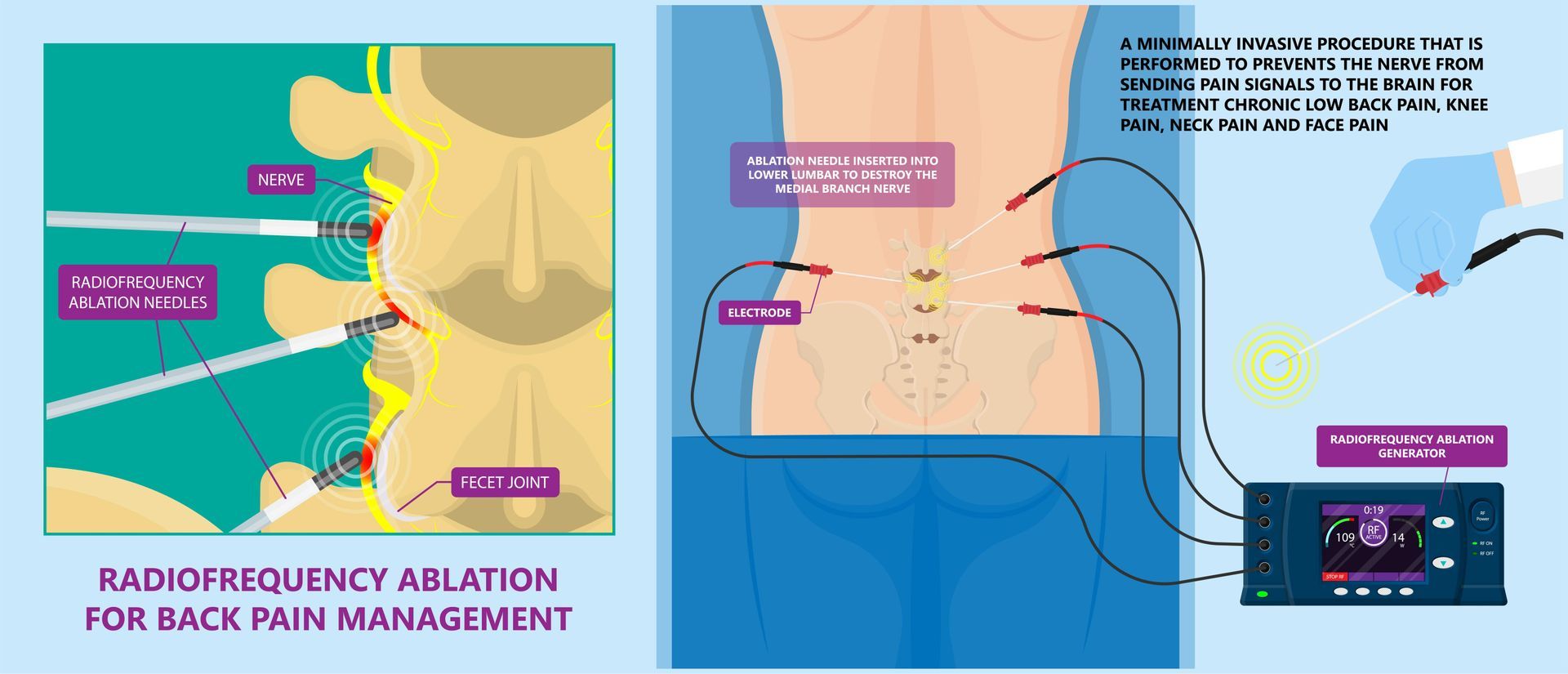Chronic mid and upper back pain can make it difficult to enjoy life, impacting everything from work to daily activities. If you’ve tried other treatments with little success, Thoracic Radiofrequency Ablation (RFA) might be the answer you’re looking for. This minimally invasive procedure targets the nerves causing your pain, offering significant and long-lasting relief. In this article, we’ll explain what thoracic RFA is, how it works, and why it’s an effective treatment for chronic back pain.
Thoracic Facet Injection For Mid to Upper Back Pain
Discover How Thoracic Radiofrequency Ablation Provides Effective and Long-Lasting Pain Relief
What Is Thoracic Radiofrequency Ablation?
Thoracic Radiofrequency Ablation (RFA) is a pain management procedure designed to treat chronic mid and upper back pain by targeting the medial branch nerves that transmit pain signals from the facet joints to the brain. The procedure uses heat generated by radiofrequency energy to create a small lesion on the nerves, disrupting their ability to send pain signals.
RFA is especially effective for individuals whose pain originates from the facet joints due to arthritis, injury, or degenerative conditions.

How Does Thoracic RFA Work?
Here’s a step-by-step overview of the procedure:
1. Preparation:
- You’ll lie face down on an exam table. The skin around the injection site will be cleaned and sterilized.
- A local anesthetic is applied to numb the area, minimizing discomfort during the procedure.
2. Imaging Guidance:
- The doctor uses fluoroscopy (a live X-ray) to guide a thin, specialized needle to the medial branch nerves near the thoracic spine’s facet joints. This ensures precision.
3. Nerve Testing:
- A small electrical current is applied to the nerve through the needle. This step helps confirm the correct nerve is being targeted by temporarily reproducing your pain or causing a mild tingling sensation.
4. Applying Radiofrequency Energy:
- Once the correct nerve is identified, radiofrequency energy is used to heat and disable the nerve, stopping it from transmitting pain signals.
5. Post-Procedure Monitoring:
- After the procedure, you’ll be monitored for a short time to ensure there are no immediate side effects. Most patients can return home the same day.
Benefits of Thoracic Radiofrequency Ablation
Thoracic RFA offers several key benefits for individuals with chronic back pain:
- Long-Lasting Pain Relief: Many patients experience relief for 6 to 12 months, and some for even longer.
- Minimally Invasive: The procedure is quick and does not require surgery, with minimal recovery time.
- Reduced Medication Use: By providing effective pain relief, RFA can help reduce or eliminate reliance on pain medications.
- Improved Mobility and Quality of Life: Less pain allows for greater mobility, making it easier to return to daily activities.
Who Should Consider Thoracic RFA?
Thoracic RFA is often recommended for people with:
Facet Joint Arthritis:
Degeneration of the facet joints can cause inflammation and chronic pain in the thoracic spine.
Chronic Pain After Injuries:
Trauma or repetitive strain can irritate the medial branch nerves, leading to persistent pain.
Thoracic Degenerative Disc Disease:
Wear and tear on the spinal discs can increase stress on the facet joints, causing discomfort.
Scoliosis or Kyphosis:
Abnormal curvature of the spine can lead to facet joint stress and related pain.
Before recommending RFA, your doctor will typically perform a medial branch block to confirm that the medial branch nerves are the source of your pain. If the block provides temporary relief, RFA is likely to offer more extended relief.
What to Expect After the Procedure
Most patients experience minimal discomfort after the procedure and can return to light activities the same day. You might feel some soreness at the injection site, but this typically resolves within a few days. Pain relief often begins within a week as the treated nerves stop sending pain signals.
Your doctor may advise avoiding strenuous activity for a few days following the procedure. Over time, you’ll notice improved mobility and a significant reduction in pain, allowing you to return to your normal routine.
Are There Risks or Side Effects?
Thoracic RFA is generally safe, but like any medical procedure, it comes with some risks:
- Temporary Soreness or Discomfort: Mild soreness at the injection site is common and usually resolves quickly.
- Temporary Numbness or Weakness: Some patients may experience numbness or weakness in the treated area, but this is typically short-lived.
- Risk of Infection or Bleeding: Rarely, there’s a chance of infection or bleeding at the injection site.
- Allergic Reaction: Very rarely, patients may react to the local anesthetic or equipment used during the procedure.
Your healthcare provider will take every precaution to minimize these risks and ensure your safety.
How Effective Is Thoracic RFA?
Research shows that thoracic RFA is highly effective for treating chronic mid and upper back pain caused by facet joint dysfunction. Studies published in the Pain Medicine Journal demonstrate that most patients experience significant pain relief and improved quality of life after the procedure.
In cases where pain returns, the procedure can be repeated to maintain relief, as the nerves typically regenerate over time.

At Arizona Pain Solutions, we understand the challenges of living with chronic mid and upper back pain. Our compassionate team is dedicated to providing personalized care and advanced treatments like thoracic RFA to help you regain your quality of life. Let us guide you through every step of your journey to pain relief.
If you’re ready to explore thoracic radiofrequency ablation as a treatment option, contact Arizona Pain Solutions today. Our team is here to answer your questions and create a personalized plan to address your chronic pain. Share your experiences or leave a question in the comments below!
This article has been carefully reviewed and edited to ensure it is clear, accurate, and easy to read, reflecting our commitment to providing high-quality, reliable information.

